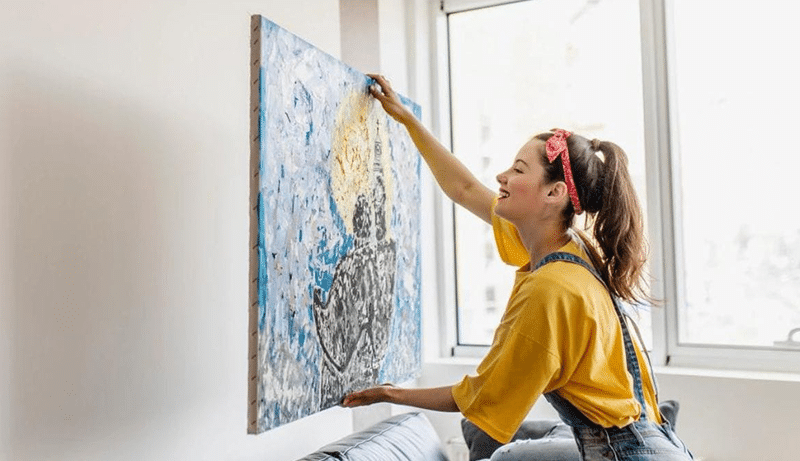Self-expression through the arts is a lovely way to add joy and color to our lives. The longevity and appearance of your artwork depend on how well you take care of it, whether it’s a work of fine art or a canvas print you purchased from a store. Your canvas painting’s surface might gather dust, dirt, and other impurities over time, causing it to lose its brilliance. Let’s look at how to safely and effectively clean canvas art so it looks fresh new.
Prior to starting
Table of Contents
Although it is safe to clean canvas paintings, it is crucial to proceed carefully and cautiously. To avoid destroying the painting’s surface or colors, cleaning your canvas painting takes a gentle touch and the appropriate products. Make sure your cleaning solution won’t damage the surface by performing a spot test before cleaning the entire painting in a small, discrete area.
Typically, canvas is painted with oil or acrylic paints, both of which can resist the cleaning techniques indicated below. However, you should first consult a professional if you think your canvas artwork was made with watercolor paint.
Similarly, it is recommended to seek the advice of a professional art restorer or conservator if the painting is a priceless work of art, an antique, or if more significant oil painting restoration is required.
Step 1:- Dust the painting with a soft-bristled brush.
To gently remove any dust or grime that may have accumulated on the painting’s surface, use a soft-bristled brush. Starting in the upper-left corner and moving down to the lower-right, hold the painting upright and paint from top to bottom. Avoid using excessive pressure or scrubbing since these actions can harm the paint or make it flake off. To clean the painting’s edges and corners, where dirt and dust tend to collect, use a little paintbrush. Dust the frame carefully if the canvas is framed.
Step 2:- Create a mild soap solution.
You can clean the acrylic canvas painting with a mild cleaning solution if it is very soiled or stained. In a basin of warm water, a few drops of mild dish soap should be added. Avoid using too much soap since it could leave a residue on the paintwork. To produce suds, gently stir the solution. Use a pH-neutral solution or solvent made specifically for oil painting cleaning on more pricey or delicate artwork to prevent unintentional harm.

Step 3:- Dip a clean cloth into the solution.
To eliminate any extra water, dip a fresh, white towel into the soapy solution and wring it out. Because too much water can harm the paint, the cloth should be damp but not drenched in it. Use just a clean towel to prevent spreading any dirt or filth. When cleaning delicate canvas paintings, it can be especially crucial to use a microfiber or lint-free cloth because these are precisely made to avoid leaving any residue or fibers on surfaces.
Step 4:- Gently rub the surface of the painting with the cloth.
Use the damp cloth to gently rub the painting’s surface in a circular motion. Avoid using excessive pressure or scrubbing force to avoid damaging the painting’s surface. Be sure to completely cover the painting’s surface as you work your way from the top to the bottom. Use a cotton swab to thoroughly clean any textured parts of the painting, dipping the swab into the cleaning solution as necessary.
step 5:- Allow the painting to air-dry completely.
To avoid water damage to the canvas or paint, it’s crucial to remove any extra water after washing the painting. To carefully wipe away any remaining water droplets from the painting, use a dry cloth or piece of paper. It’s time to let the painting fully air dry after removing the extra water. The artwork should be hung in a cool, dry location so that it may fully dry and air out. Keep it away from direct sunlight to prevent paint fading or cracking. Keeping the painting away from heat sources is also vital since heat can cause the paint to expand and contract, harming the canvas.
Final Verdict
Maintaining a canvas painting’s integrity and look requires regular cleaning. Anyone may clean their canvas paintings at home safely and successfully by following the step-by-step directions and advice in this manual. Using gentle cleaning techniques and products will help you keep your artwork looking good for years to come. Consult a qualified art restorer or conservator if you’re unclear of how to properly care for an old oil painting that could be priceless.

